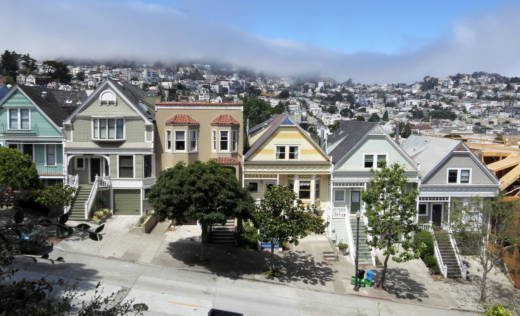The most eye-popping number, however, is the immense growth in property tax revenue -- well over 50 percent during the last decade alone and about 1,000 percent since 1978, when Proposition 13 was overwhelmingly passed by voters.
The Legislature’s budget analyst, Mac Taylor, points out that “the property tax has grown faster than the economy” since then.
“Personal income in California -- an approximate measure of the size of the state’s economy -- has grown at an average annual rate of 6.3 percent since 1979,” Taylor’s 2012 report says. “Over the same period, revenue from the 1 percent property tax rate has grown at an average annual rate of 7.3 percent.”
How is that possible?
While Proposition 13 limits taxes on any particular piece of property as long as it remains under the same ownership, taxable values are upgraded when it changes hands. That, along with ever-rising market values, accounts for much of the steady increase.
Another big factor is new construction, both residential and commercial, added to the tax rolls as population increases. However it happens, property tax revenue keeps growing, currently by about $3 billion each year.
Proposition 13’s critics -- public employee unions and their political allies mostly -- have yearned for decades to repeal or modify it.
Repeal would be a political impossibility; it remains very popular with voters, most of whom are homeowners and benefit from its limits. Critics, therefore, have tried to gain traction for a “split roll” that would eliminate the limits for commercial property, arguing that it changes hands less often than homes and its owners are getting an undeserved tax break.
They’ve also sought to change laws governing change of ownership, claiming -- with some justification -- that they allow property owners to manipulate the system and avoid tax value upgrades by creative structuring of deals.
One could argue, however, that Proposition 13 staved off what could have been a much larger tax revolt.
Had it not been enacted, and were local officials today using the same uncapped assessment practices and still taxing at the same rate as they did before 1978, property taxes would be three times as high, or about $200 billion a year.
That would have been politically unsustainable, so some limit on property tax growth was inevitable. The Legislature had plenty of warning in the 1970s that a tax revolt was coming and ignored it, thus giving Howard Jarvis and other Proposition 13 proponents an opening.
The Proposition 13 debate will continue, but arguing that it has undermined vital tax revenue is disingenuous, as the latest data prove.
